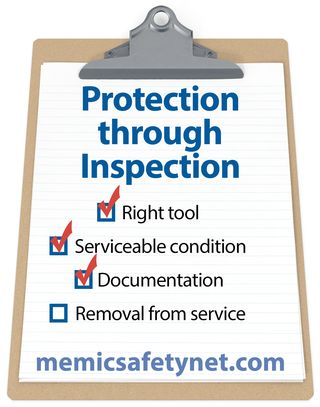Protection Through Inspection
“The right tool for the job” is an old saying. And it turns out it’s a good safety saying too. Although it may conjure up a construction or manufacturing setting, there isn’t a workplace where it doesn’t ring true.
One example of the wrong tool for the job is an office worker who uses a chair to reach the top shelf. Another is a healthcare worker who lifts a patient without using a mechanical aid because "it's in the other wing." No matter the setting, if the proper tool is not used when needed, you're in the high risk zone right out of the gate.
Even if you have the right tool, there's a second consideration that is just as important. Is the tool in serviceable condition? If it's the right tool and it's in good shape, I predict you’ll have a great day at work. If it's the right tool and it’s defective, you may be worse off using it. This brings us to the matter of proper inspection.
I obviously don't have enough space in this blog to get into specifics. Too many tools, too many workplaces. But there is one universal resource that can dial up the proper inspection process for whatever tool or equipment you’re using and it’s called the manufacturer’s information or manual. Not only will it give you the "what" but also the "how" and the "how often."
But one inherent flaw with this booklet is that it's typically the first thing to get tossed once the item is unpacked. If this is the situation you find yourself in, then head to the manufacturer’s website or contact the vendor who made the sale.
Two other items to consider on this topic are documentation and removal from service.
Documentation is another area where you need to keep it simple. Do you need to document the inspection of a 40-foot power cord every time you use it? Probably not realistic. However, if you’re doing an annual required inspection of that patient lifting device I mentioned earlier, then you’d certainly want that on file. Again, your manufacturer’s information will likely provide some direction.
The last thing in this overview of inspections involves taking something out of service. I personally have done several incident investigations where someone got hurt because the tool was defective and a coworker knew about it before the accident. Somehow the defective item needs to be taken out of service. There are many ways to do this including:
- put a visible tag or other indicator on it so others know it's broken,
- have a dedicated area to bring defective items to, and
- render it inoperable if it cannot be repaired and put it in the trash.

